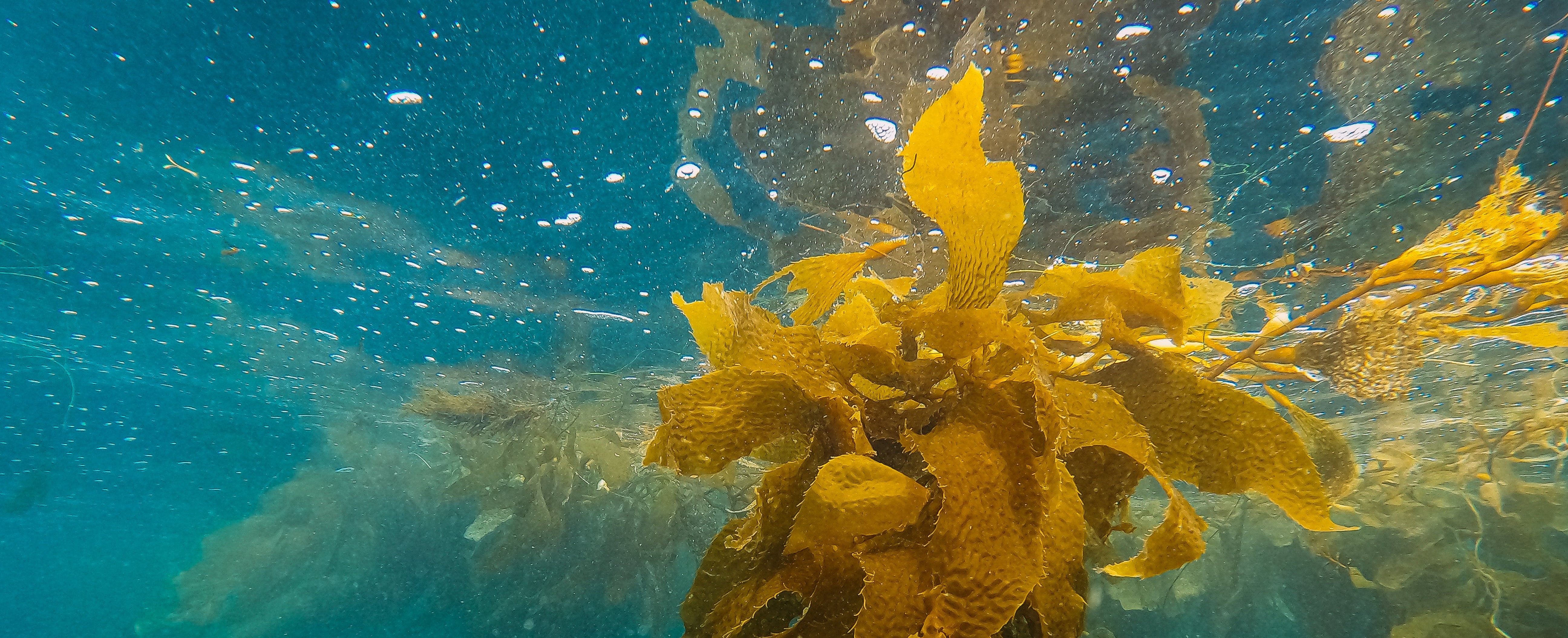Kelp Forests
It appears this article is a stub! Alert the author if you'd like to see it expanded.
This article is a work in progress! Expect more content to be added.
This article was created for my Species-A-Day project for 2024! Read more here!
The kelp forests are a biome located in relatively shallow and moderately warm waters, typically close to shore. They are characterised by the dense and tall brownish plants growing from the sandy floor of the ocean to its surface. The water in these areas is clear enough for light to easily reach the bottom, allowing for the growth of this kelp. This clearness, in part, is due to the kelp itself helping to filter the water, but is also a result of smoother and slower currents, causing most debris to sink rather than be swept along in the water.
Geography
A lot of the kelp forests are flat, with minimal changes in ground level up until the edge of the biome drops off into a deeper oceans. The water is similarly quiet and steady, with some smaller waves but nothing large enough to topple even a small floatation device.
Ecosystem
There are three primary species of kelp living in the kelp forests, which sustain and provide hiding places and homes for the majority of the fauna living in the region. These species are dancing kelp, entangling kelp, and glitterkelp. Another plant species found lurking within the forests is carnivorous kelp, a species that grows off of the leaves of dancing kelp to ensnare unsuspecting prey. Lining the ocean floor are green urchins and sun urchins, and the ocean centipede which eats both.
Fish species such as the flatfish and the blue rockfish make their homes in the area, eaten by larger animals such as the kelp octopus, the parrotseal, the leaf otter, and the ribbon ray. Some of the predator species living in the biome include many different shark and eel species, such as the spiked eel, the weaver eel, and the sand eel, as well as the kelpshark, ringshark, and snakeshark. Some of these species have been domesticated by the ethnicity of kuuyikar living in the region, the kelpen kuuyikar; the eels can be trained to pull eelkelp chariots, and local will also practice sharkriding, racing each other through meticulously-planned courses.
Fish species such as the flatfish and the blue rockfish make their homes in the area, eaten by larger animals such as the kelp octopus, the parrotseal, the leaf otter, and the ribbon ray. Some of the predator species living in the biome include many different shark and eel species, such as the spiked eel, the weaver eel, and the sand eel, as well as the kelpshark, ringshark, and snakeshark. Some of these species have been domesticated by the ethnicity of kuuyikar living in the region, the kelpen kuuyikar; the eels can be trained to pull eelkelp chariots, and local will also practice sharkriding, racing each other through meticulously-planned courses.
Natural Resources
The primary natural resource that can be found in the kelp forests is sanstone, made naturally by the ocean's sands. Sandstone is used for the majority of construction in the region, and is sometimes traded externally, either as a building material or for art purposes. Kelpen structures tend to have engravings across them, depicting patterns or images, to make the sandstone less flat and boring.
Glass can also be made with the sands of the kelp forests, and is often used for windows or even entire glass walls in the kelp forests. Kelpen kuuyik will often try to mimic the colours and shapes of coralglass, often giving a stippled effect to their glass and dying it with whatever dyes they have available. Actual coralglass is highly coveted in the kelp forests, and there is frequent trade with coralite kuuyikar for this reason.
Glass can also be made with the sands of the kelp forests, and is often used for windows or even entire glass walls in the kelp forests. Kelpen kuuyik will often try to mimic the colours and shapes of coralglass, often giving a stippled effect to their glass and dying it with whatever dyes they have available. Actual coralglass is highly coveted in the kelp forests, and there is frequent trade with coralite kuuyikar for this reason.
Included Locations
Related Ethnicities
Inhabiting Species
Related Materials




I love kelp forests. I would be much more wary of yours with the existence of carnivorous kelp though. O_O
dont worry! they only feed on small fish (usually)